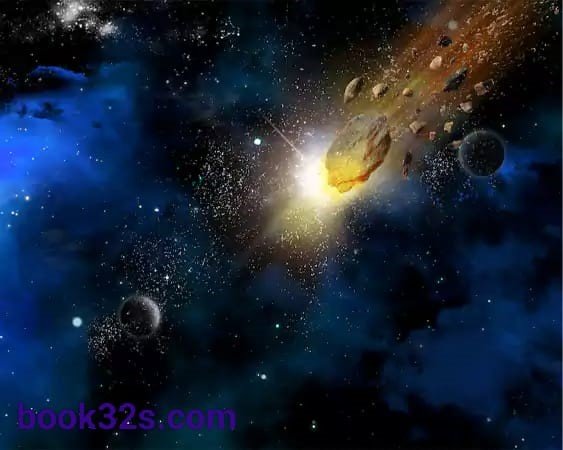In a vast universe filled with countless celestial wonders, few phenomena capture the imagination quite like stars. Among these cosmic marvels, Stars-923 emerges as a unique and intriguing subject of study. This article embarks on an exploration of the fascinating world of Stars-923, diving into its significance, characteristics, and the broader implications it holds for science and our understanding of the cosmos. Along the way, we will uncover the mysteries and questions surrounding this stellar entity and its potential role in shaping the future of space exploration.

The Discovery of Stars-923
Stars-923 was first identified through an advanced astronomical survey, using sophisticated telescopes that peer deep into the universe. Although stars are often cataloged in large numbers, the discovery of Stars-923 stood out due to its unique properties. Astronomers and astrophysicists noticed unusual patterns in the light emitted from this star, prompting deeper investigation.
Characteristics of Stars-923
To truly appreciate the significance of Stars-923, we must first examine its defining characteristics.
Unusual Brightness
One of the first things that astronomers noted about Stars-923 was its unusual brightness. Unlike typical stars in its category, this particular star emits an intense and consistent light, making it easier to study from great distances. This brightness is not only aesthetically pleasing to observers but also critical for scientific measurement.
Peculiar Spectral Lines
Another defining feature of Stars-923 is the unique spectral lines it produces. Spectral lines serve as the fingerprints of stars, revealing the elements present within them. In the case of Stars-923, scientists found an abundance of rare elements that are not commonly found in other stars. This suggests that Stars-923 could be part of a relatively rare stellar group.
Rotational Speed
The speed at which Stars-923 rotates is yet another noteworthy aspect. Most stars rotate at a predictable speed depending on their mass and age. However, Stars-923 defies these expectations with an unusually high rotational velocity. This rapid rotation could have significant implications for our understanding of stellar dynamics and evolution.
The Role of Stars-923 in Modern Astronomy
Stars-923 and Stellar Evolution
One of the central questions in the study of Stars-923 is how it fits into the broader context of stellar evolution. Stars, like all objects in the universe, go through a life cycle. They are born from clouds of gas and dust, live for millions or billions of years, and eventually die, sometimes in spectacular fashion, as supernovae or other cosmic phenomena.
Stars-923, with its unique properties, challenges some of the conventional wisdom about how stars form and evolve. For example:
- The unusual composition of Stars-923 suggests that it may have formed in an environment with a different chemical makeup than the regions where most stars are born.
- Its rapid rotation may indicate that it is part of a binary star system, though no companion star has yet been observed.
- The star’s brightness and spectral characteristics could provide new insights into the late stages of stellar evolution, particularly how stars shed their outer layers as they age.
The Potential for Habitable Planets Around Stars-923
One of the most exciting aspects of studying stars like Stars-923 is the possibility that they may host habitable planets. While no exoplanets have been definitively confirmed around Stars-923, astronomers are actively searching for signs of planets in orbit around the star.
Several factors make Stars-923 an interesting candidate for the search for extraterrestrial life:
- Stable Light Emission: The star’s consistent brightness could provide a stable environment for any potential planets, making it easier to detect subtle variations that might indicate the presence of planets.
- Chemical Composition: The unique elements found in Stars-923 could suggest that any planets orbiting it might have unusual surface conditions or atmospheres.
- Goldilocks Zone: If Stars-923 has planets within its habitable zone—the region where liquid water could potentially exist—these planets could be prime candidates for life as we know it.
The Future of Research on Stars-923
As technology advances and our ability to observe distant stars improves, Stars-923 is expected to remain a key object of study in the coming years. Several ongoing and future missions will focus on this star, hoping to answer some of the lingering questions surrounding it.
Upcoming Space Missions Targeting Stars-923

Several major space observatories and missions have made Stars-923 a primary target of study. Some of the most promising include:
- James Webb Space Telescope (JWST): The JWST, known for its ability to peer into deep space with unprecedented clarity, has been tasked with observing Stars-923. This mission will provide detailed images and data on the star’s surroundings, helping scientists understand more about its formation and any potential planets.
- European Space Agency’s Gaia Mission: Gaia is focused on mapping the stars of the Milky Way in three dimensions, and Stars-923 is part of its survey. By tracking the star’s movements over time, astronomers can better understand its position in the galaxy and any gravitational influences it might experience from nearby stars or planets.
Ground-Based Observatories
In addition to space-based missions, several ground-based observatories are contributing to the study of Stars-923. These include:
- The Keck Observatory in Hawaii, which is using its powerful optical telescopes to study the star’s light spectrum in greater detail.
- The Very Large Telescope (VLT) in Chile, which has begun detailed infrared observations to explore the star’s chemical makeup and any potential planetary systems.
Theories and Speculation Surrounding Stars-923
While much is known about Stars-923, there is also room for speculation and theory. Some of the most intriguing questions that scientists and researchers are trying to answer include:
- Is Stars-923 a Binary Star? Some researchers believe that Stars-923 may be part of a binary star system. The unusually high rotational speed of the star suggests that it could be influenced by the gravitational pull of a nearby companion, even if that companion has yet to be observed directly.
- What Makes Stars-923 So Bright? While astronomers have some ideas about why Stars-923 emits such intense light, the full explanation remains elusive. Some speculate that the star is undergoing a unique phase of stellar evolution that makes it unusually luminous, while others suggest that the brightness could be the result of interactions with a nearby object, such as a gas cloud or even a black hole.
- Could Stars-923 Host Life? While it’s unlikely that Stars-923 itself could host life (since stars are gaseous and extremely hot), the possibility that it may have planets within its habitable zone raises the exciting question of whether life might exist on a planet orbiting this star.
Conclusion: The Significance of Stars-923
In the grand scheme of the universe, Stars-923 represents one of countless celestial bodies scattered across the cosmos. Yet its unique properties and potential for further discovery make it a particularly intriguing subject for astronomers and astrophysicists alike. Whether it is the star’s unusual brightness, its potential to host habitable planets, or the ongoing questions about its origins and nature, Stars-923 serves as a reminder of how much we still have to learn about the universe around us.
As research continues, Stars-923 may well become a cornerstone of stellar studies, offering new insights into how stars evolve, what kinds of planetary systems can form around them, and whether life might exist in the far reaches of space. The future is bright—quite literally—for the study of Stars-923, and we are only just beginning to unlock its many secrets.
This comprehensive journey through Stars-923 highlights its critical role in advancing our understanding of the cosmos, its unique characteristics, and the excitement it brings to the scientific community. As more discoveries unfold, Stars-923 will undoubtedly remain a shining example of the wonder and mystery that the stars continue to offer humanity.
